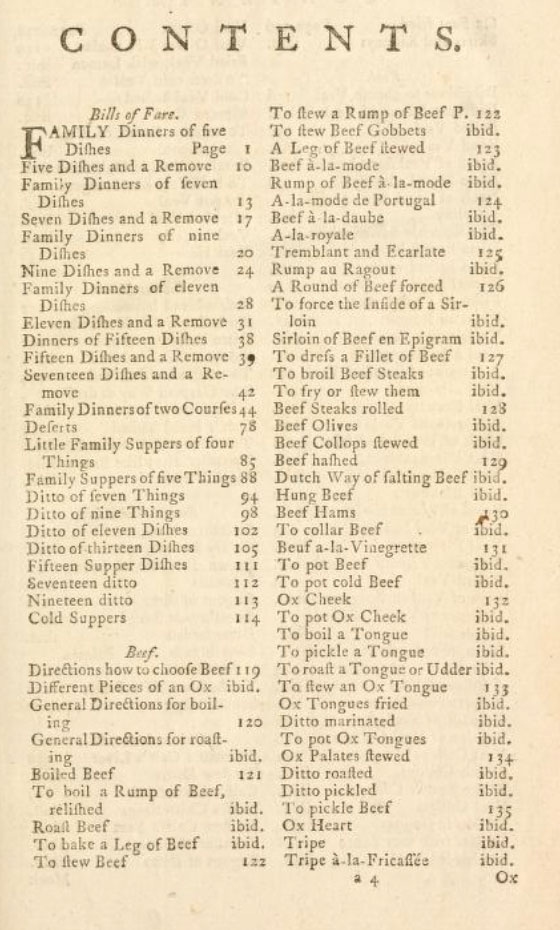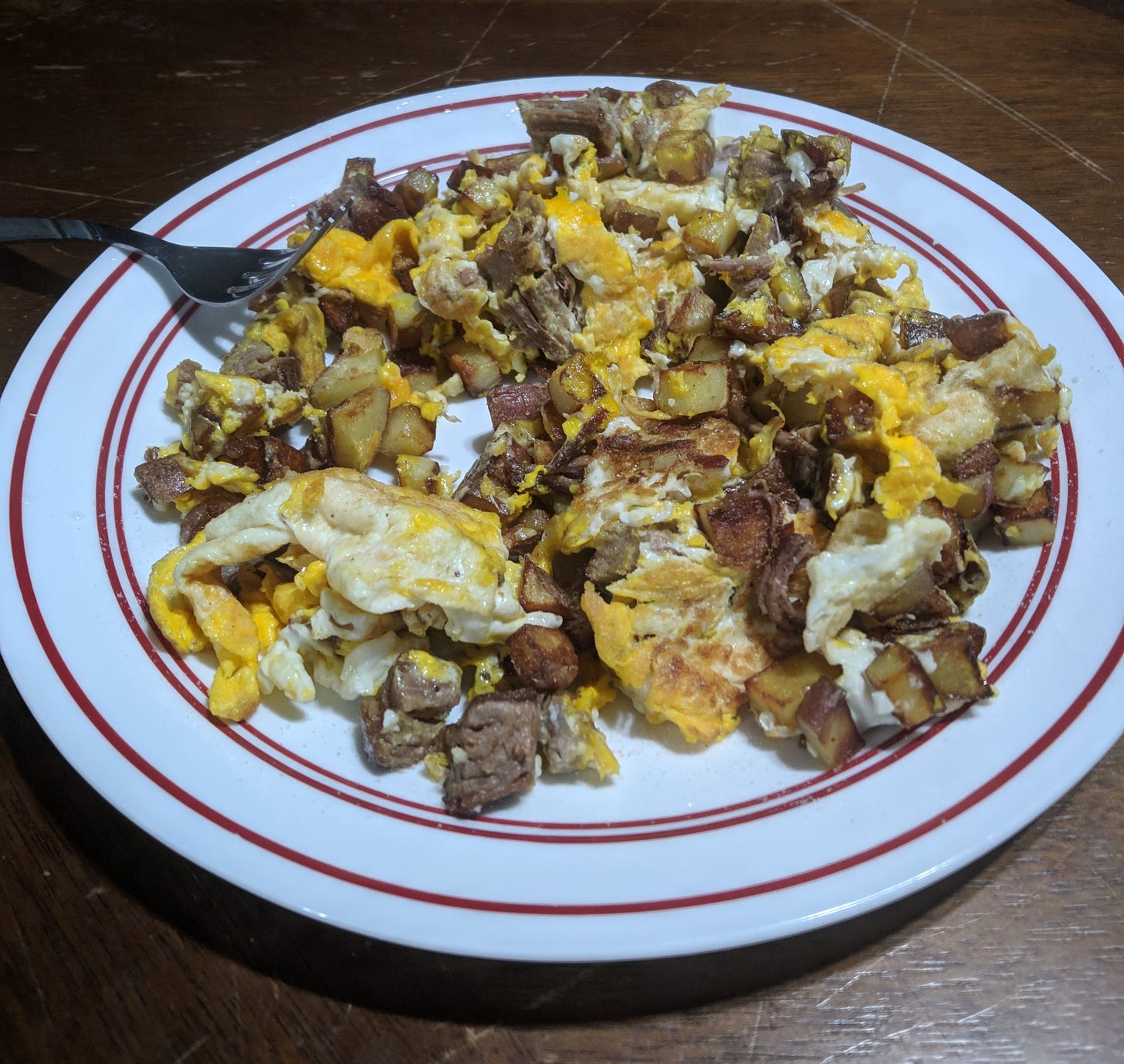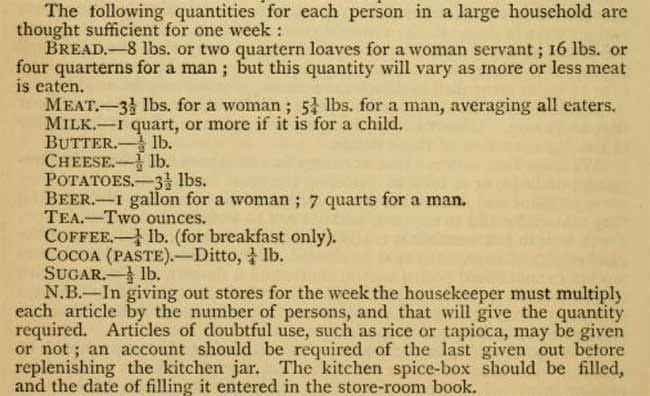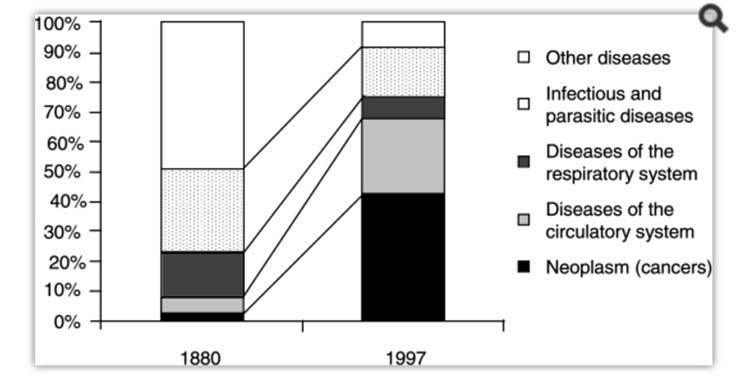Source: Mercola
Dietary Trends From Our Ancestors
Analysis by Ashley Armstrong
Story at-a-glance
America faces a health crisis with a 700% increase in chronic disease since the 1930s, less than 10% of Americans have good metabolic health, and obesity rates have soared to 42.4% as of 2018
The reliance on processed foods and influence of large food companies have eroded traditional food cultures, contributing to confusion over healthy eating and a spike in diet-related diseases
Analysis of vintage cookbooks reveals a stark contrast between our ancestors' diet, which included whole-animal consumption, diverse animal products and natural carbs, and today's processed and restrictive eating habits
Past diets rich in meat, saturated fats, and year-round carbohydrates challenge modern misconceptions, highlighting the negative impact of vegetable oils and processed foods on metabolic health
By returning to a diet consisting of meat, butter, dairy, natural sugars, fruits, and well-prepared starches and vegetables, and avoiding modern processed and PUFA-rich foods, we can reclaim the health and nutritional wisdom of past generations
It's no secret that the health in America is declining, rapidly. And the food we consume daily plays a huge role in determining health outcomes. So, what did our great-grandparents eat during a time when the rates of chronic disease development were 700% lower and obesity was almost nonexistent?
Let's dive in! And explore dietary trends from vintage cookbooks which can help reduce food fear and increase food awareness so that you can make more empowered dietary decisions that align with your intuition.
Reclaiming Our Lost Food Culture
Now, more than ever, there seems to be so much confusion as to what we should eat — what food is "good," what food is "bad." With such a large reliance on processed food and massive marketing dollars spent by large food companies, we've lost touch with food culture. In fact, we don't have food culture.
People are truly confused as to how we should eat, and how to form meals. And with chronic diseases, obesity, and autoimmunity on the rise, one thing is clear: what we are doing now isn't working. The chronic disease prevalence in the 1930s was 7.5%.1 Today, 60% of the population has one or more chronic disease.2
This is a 700% increase. A new 2022 study found that less than 10% of Americans have good metabolic health.3 And data from the CDC in 2018 reported that 42.4% of Americans are considered obese.4 Imagine what this number is in 2022!
And while science and technology are improving, America is the only developed nation with a *declining* healthy life expectancy and total life expectancy!5 And this data is before COVID-19.
Total life expectancy (TLE) is how long people within a population are expected to live. Healthy life expectancy (HLE) measures how long people within a population are expected to live without disease or disability. For example — someone lives disease free for 65 years, then develops heart disease at 65 and passes 10 years later. HLE = 65 and total life expectancy (TLE) = 75.
TLE measures how long we can keep sick people alive and incentivizes disease management. HLE directly relates to the number of healthy and happy years and incentivizes disease prevention.
You can analyze the following data6 from the World Health Organization by comparing the TLE or HLE from previous years in the U.S. The TLE in 2015 was 78.56 and in 2019 it decreased to 78.5. The HLE in 2010 was 66.7, which declined to 66.6 in 2015, and declined again to 66.1 in 2019. With a declining TLE and HLE and obesity on the rise, it's time to admit we are doing something wrong.
But we didn't always have such widespread chronic health problems ...
How did we get to the point where 60% of the population has one or more chronic disease and only 12% of the population is metabolically healthy?7 Well, we are certainly a little less active, and there are a lot more environmental toxins, that's for sure.
But what we eat every single day plays a HUGE role in determining health and metabolic outcomes. So, let's go back in time a bit to see what people were eating in a time when chronic diseases were not as widespread to gain some insight to the type of food that can support health. How can we do this? By analyzing vintage cookbooks.
Over the last few months, I have been moderately obsessed with reading old fashioned cookbooks from the 1700-1900 era. These cookbooks provide a great picture as to how families ate at the time. And how much food culture they had, that was passed down from generation to generation.
The nutritional wisdom continues to fascinate me as I learn more about cultural food preparation. So, let's dive into 10 trends I have gathered comparing these cookbooks to how most people eat today. (and what "mainstream" claims as "healthy.")
Trend No. 1: They Ate the Whole Animal
Meaning, nose to tail eating was just a normal part of everyday life. They didn't just eat skeletal muscle cuts like chicken breast, ribeyes and tenderloins like so many do today. No, nothing went to waste so they ate pretty much every cut on the animal and used the bones, tendons, and other collagenous parts to make broth, soups and stews.
The result was not only just less waste, but also a wider nutrient intake, and more balanced amino acids. Example recipes from "The Southern cookbook of fine old recipes," 1935.
They utilized all parts of the animal — while Americans today seem to be obsessed with chicken breasts, tenderloins and ribeyes. The organs are often the most nutrient-dense parts of the animal, and bone in, "tough" cuts of meat often contain a lot more collagen relative to pure muscle meat.
Trend No. 2: They Ate Meat and Saturated Fat
Check out a few pages from the Table of Contents from "The Lady's Assistant for Regulating and Supplying the Table" from 1787. They did not exclusively eat meat, but the consumption of meat was considered a mark of a good diet, and its complete absence was rare (consuming low amounts was in the case of an extreme poverty diet).8


They did NOT fear saturated fat like mainstream still tells us to do. In fact, recent re-evaluations of the data used by Kellogg to demonize saturated fat in the 1900s are showing a different picture. Some researchers have instead demonstrated that "[s]aturated fats from animal sources [are] inversely correlated with the prevalence of NCDs [non communicable diseases]."9
As illustrated in the paper, "Re-evaluation of the traditional diet-heart hypothesis: analysis of recovered data from Minnesota Coronary Experiment (1967-73)", published 2016,10 We are eating a lot more vegetable oils, and less animal fats relative to the early 1900s, and yet our health is declining:
"Available evidence from randomized controlled trials shows that replacement of saturated fat in the diet with linoleic acid effectively lowers serum cholesterol but does not support the hypothesis that this translates to a lower risk of death from coronary heart disease or all causes.
Findings from the Minnesota Coronary Experiment add to growing evidence that incomplete publication has contributed to overestimation of the benefits of replacing saturated fat with vegetable oils rich in linoleic acid."
Was it really the meat that caused health issues? No. High PUFA diets lower metabolic rates and hinder glucose metabolism. Our great-grandparents didn't eat super high fat diets, but the fat they did consume was rich in saturated fat. Animal fat consumption went down, while vegetable oil and PUFA-rich fat consumption went up.11
Trend No. 3: They Ate Carbs All Year Round
Carbs consumed were largely fruits in season (citrus, for ex in Jan. melons, for ex in summer), jams and jellies, honey, sugar, potatoes, flour in baked goods, and bread.
Here are examples of a "Bill of Fare" (meal plan) with some receipts (recipes) for the month of January (winter) — top menu — and August (summer) — bottom menu. Both from "What Shall We Have to Eat?" 1893.


Carbohydrates were consumed all year round, and a lot of them! They definitely ate in season, but they went through extensive preparation (think jams and jellies) to ensure access to carbs 365. Here are a few examples of grape preservation from "The Lady's Assistant for Regulating and Supplying the Table," 1787. (Note: In old English, "s" was written as "f", so "fugar" = sugar)
Trend No. 4: They Ate a Lot of Calories
Americans are now fatter than our ancestors, despite eating similar (or less) calories. They were NOT afraid to eat! The more money you had — the more food you ate. Being hungry and eating a lot was seen as a good thing. (The word "diet" wasn't commonly used). Now, you have people normalizing 1600 calorie diets, and people are eating the same calories as what was recommended for 9-year-old children in 1915. From "Cookbook 365", 1915.
As discussed above, one of the biggest changes between then and now is the TYPE of fat in our diet (which changes the types of fat inside of our bodies. And this dietary fat switch has hindered glucose metabolism and downregulated our metabolisms).
Yes, fat gain is the result of too many calories IN relative to calories OUT (burned). But there has been a major change in our metabolisms, reducing the calories OUTSIDE of the equation.
Dr. Speakman, one of the leading metabolism and obesity researchers in the world, has found that there has been a reduction in BMR (basal metabolic rate) despite an increase in active energy expenditure. So, while some Americans may consume too many calories for their needs (and this can lead to weight gain), a huge red flag is that the basal metabolic rate (BMR) of our nation is DECLINING.
This statement is supported by a steady downward trend in our body temperature, as metabolic rate can be assessed by body temperature. Image below from a January 7, 2020 study in the journal Elife titled "Decreasing Human Body Temperature in the United States Since the Industrial Revolution."12
Body temperature has declined, implying lower metabolic rates (since heat is generated as a byproduct of energy production). A lower metabolism means that in order to maintain (or lose) weight, we have to eat less calories. With food abundance, you can now see why it is VERY easy to gain weight.
While obesity is a complex topic that requires a very nuanced conversation, our ancestors ate a lot of calories and remained lean since they had strong metabolic rates. A 136% increase in our dietary linoleic acid (an omega-6 PUFA) since the early 1900s has come with a reduction in our metabolic rates.
The type of fatty acids you consume (which impacts the type of fat inside of your tissues) is playing a significant role in the CALORIES OUTSIDE of the energy balance equation (your metabolism).
Trend No. 5: They Ate a Wide Variety of Animal Products
Meaning, they didn't just eat chicken (which Americans seem to prioritize these days). Each animal provides a unique set of nutrients, and some are higher in certain nutrients than others. For example, beef and lamb are high in zinc. While pork is high in Vitamin B1. Again, this diversified protein intake (beef, poultry, wild game, pork, seafood, and dairy) resulted in a diverse intake of beneficial nutrients.
Trend No. 6: They Ate a Wide Variety of Vegetables, But Mainly Cooked
I do NOT think raw kale smoothies were on the menu! We are not ruminant animals who have complex digestive systems to break down thick cellulose fibers in raw veggies. We need easy to digest food! They made sure the vegetables and potatoes they consumed were well cooked — which made digestion easier and reduced antinutrient levels.13
Trend No. 7: Daily Sugar Consumption in the Form of Homemade Desserts
Yes, sugar is low in nutrients. But no, sugar is not inherently toxic. In the context of an otherwise nutrient-rich diet, sugar can be metabolically supportive. Our great-grandparents consumed moderate amounts of sugar in homemade desserts daily.
Their desserts were largely made from unfortified flour, sugar, butter, eggs, and milk. (No sugar alternatives, margarine, faux-eggs, or nut milks). "Desserts were also regularly served, often fruit or dairy-based – apple pies, rice or tapioca puddings, stewed or fresh fruit like gooseberries or cherries, in season."14 From "The Common Sense Cookbook", 1894.
Relative to the early 1900s, we currently consume similar amounts of cane and beet sugar. Again, sugar is often demonized, but is it the sugar ingredient, or the food the sugar is commonly packaged in? (like Twinkies, doughnuts, cakes, etc. that contain fortified flour, preservatives, dyes, and vegetable oils)
Consuming sugar in homemade baked goods (without vegetable oils) in the context of a well-rounded, nutrient-rich diet is not toxic. As you can see in the graph below, from the paper "United States Dietary Trends Since 1800: Lack of Association Between Saturated Fatty Acid Consumption and Non-communicable Diseases,"15 refined sugar (blue) is similar today to levels in the early 1900s.
Trend No. 8: They Ate Refined Flour
Refined flour WAS a part of their diet through daily treats, baking bread and was regularly used in sauce recipes. However, their flour was not fortified with iron (metal shavings, which was added to our flour and implemented in the 1940s), was not from genetically modified grains, and was not coated in high amounts of pesticides (like Glyphosate). So, grain sourcing in today's day and age is vital. From "Buckeye Cookery," 1890.
Trend No. 9: They Did Not Eat Processed Food Out of a Bag
Home-cooking was the norm. In fact, processed food consumption has increased from <5% in the 1800s to now more than 60% today.16 Cooking and prepping food was a sacred activity, not an inconvenience. Many cookbooks viewed it as a cherished art form, passed from one generation to the next. From "Three Meals a Day", 1890.
Trend No. 10: They Did Not Voluntarily Fast, and Three Meals a Day Was the Norm
Check out some screen shots from various vintage cookbooks. From "Mrs. Beeton's Book of Household Management," 1907.
Many cookbooks contained Meal Plans that included three meals a day, which were termed "Bill of Fares." Here is an example from "The Queen of the Household," 1896.
From "What shall we eat? A manual for housekeepers. Comprising a bill of fare for breakfast, dinner, and tea, for every day in the year," 1868. (They often didn't use the word "lunch," — so they said "Breakfast, Dinner, Supper" instead of "Breakfast, Lunch, Dinner.") This cookbook has a meal plan for every week of the year!
Summary of What Was and What Was Not in the Cookbooks
Check out this "market list" from "Warne's Model housekeeper" 1882, where the author mentions this weekly grocery list in addition to produce available at the market.
One could argue that our great-grandparents, and great-great-grandparents, were healthier than us. And we can learn a lot from them. A common counter argument to this statement is "but our great-grandparents didn't live that long!"
While medical advancements have certainly improved some aspects of healthcare, the assumption that human life span has increased *dramatically* is misleading. Overall lifespan has increased since then, but there is some evidence that this is not because we are living far longer. Instead, it's increased since more of us are *making* it that far. A lot of life expectancy data from the past is skewed by high rates of infant mortality.
"Infant mortality rates were unquestionably high, and around 50% of all infant deaths at all levels of society was due to infectious diseases."17
If you have two children, and one dies before their first birthday but the other lives to the age of 70, their average life expectancy is 35.
"Once the dangerous childhood years were passed ... life expectancy in the mid-Victorian period (1850-1870) was not markedly different from what it is today" – Judith Rowbotham and Paul Clayton.
A five-year-old girl would live to 73, and a boy to 75. Modern medicine and science is very good at keeping babies alive, which will thus increase our life expectancy. Plus, they didn't suffer from the chronic diseases and autoimmune conditions plaguing us today. Many enjoyed relatively good health in old age! There is evidence that rates of chronic diseases were significantly lower, indicating the healthy life span was higher.
Here is an image from the 2008 paper, "An Unsuitable and Degraded Diet? Part Three: Victorian Consumption Patterns and Their Health Benefits,"18 which compares the causes of death between two time periods.
Another image from the same paper19 showing trends in cancer.
There has of course been political factors and influences from large businesses that have changed the dietary recommendations over the last 100 years. For example, the demonization of animal food that we've consumed for generation can be traced back to profits. As a society, we've taken the most bioavailable and nutrient-dense animal protein sources and have labeled them as "unhealthy."
But it's no coincidence that large food corporations cannot make big profit margins with small scale farming, but they can easily profit by making fake, plant-based versions of these foods utilizing corn and soybean byproducts from mono-cropped fields and other highly processed ingredients.
In Conclusion
If we return to the question of "what should we be eating" after learning about food history, the answer is clear. Meat, butter and dairy, sweets and sugar, fruit, properly prepared starches (like potatoes, rice and bread without added ingredients and sourced well) and well-cooked vegetables.
PUFA-rich foods were not a big part of their diets — and a large increase in dietary PUFAs has negatively impacted metabolic health. Of course, food sourcing matters, and paying attention to where your food comes from, what chemicals are used, what the livestock are fed and how they were raised are all important factors. And this was a benefit they had: The food readily available to them was better quality and lower in PUFAs.
But our great-grandparents did not obsess over what they should/should not be eating like some diet circles do these days (carnivores, vegans, etc.), and it is very freeing to know they ate a wide variety of food (including, yes, sugar!).
They knew this intuitively since it was passed down from generation to generation, and this innate nutritional wisdom is portrayed and preserved in these vintage cookbooks. Food was viewed as nourishment and love, not as an inconvenience and something that was prepared quickly from a package.
Health is simplified when you understand that everything goes back to energy production. Learning about your physiology and metabolism empowers you and can break you out of living in a state of fear.
When you understand metabolic health and that the metabolic state of your body impacts the function of various "compartments," you can better understand why some foods or activities may be metabolically supportive (increase energy production), and why others may hinder energy production. Instead of arbitrarily labeling something as good or bad because an influencer said so.
For example, a meal should INCREASE our body temperature, meaning our body is using that food for fuel. You will not heal by fearing food.
When you have food and metabolic awareness, you can ditch the fear-based mindset, and realize that restrictive approaches may come with short-term benefits (and it is fine to utilize them in the short-term), but are almost always paired with long-term consequences (loss of some bodily function). You instead enter an empowered state where you can make more educated decisions as to what is moving your health forward, and what's holding it back.
Food should be nourishing, and food should be enjoyed. A healthy diet does not have to be restrictive. If it is, it's not sustainable. If you are frequently binging, then your current approach is not working and your body is asking for nutrients and energy.
Sources and References
3 Journal of the American College of Cardiology July 12, 2022; 80(2): 138-151
5, 6 WHO Life Expectancy
9, 11, 15, 16 Frontiers in Nutrition January 13, 2022
17, 18, 19 JRSM 2008 Sep 1; 101(9): 454–462
20 Journal of Applied Physiology January 1, 2008; 104(1): 1-9
21 Journal of Hepatology November 2004; 41(5):721-9
Source: Mercola
The Ultimate Guide to Bone Broth: Nature's Collagen Supplement
Analysis by Dr. Joseph Mercola
Story at-a-glance
Homemade beef bone broth is a budget-friendly and nutritious dietary cornerstone, rich in collagen, healthy fats, calcium, magnesium, phosphorus, silicon, sulfur, trace minerals, chondroitin and glucosamine
Bone broth helps “heal and seal” the gut lining, which is important for optimal health and disease prevention
Abundant in collagen, bone broth supports tissue integrity, muscle repair and overall longevity, surpassing costly supplements
Harnessing the convenience of a pressure cooker like the Instant Pot streamlines bone broth preparation, ensuring safety and efficiency
From sipping it warm for comfort to enhancing soups, stews and sauces to reviving leftovers, bone broth elevates dishes with rich flavor and nutritional value
According to an old South American proverb, "Good broth will resurrect the dead."1 While this assertion may verge on hyperbole, it underscores the longstanding reverence for this wholesome food throughout history.
Homemade bone broth made from beef bones is as “staple” as it gets if you want to eat healthier. It’s also a really cost-effective way to improve your diet, as you can make use of leftover carcass bones that would otherwise be thrown away.
Beef bone broth is one of the most important microbiome optimization strategies and helps “heal and seal” your gut, which is crucial for optimal health and disease prevention. Many of our modern diseases appear to be rooted in an unbalanced mix of microorganisms in your digestive system, courtesy of an inappropriate and unbalanced diet. Bone broth plays a vital role as it’s easily digestible, helps heal the lining of your gut and contains valuable nutrients.
The Science of Bone Broth and Collagen
One of the reasons why bone broth is so good for you is because it’s loaded with collagen. While there are plenty of collagen supplements on the market, bone broth is by far the least expensive option.
Collagen accounts for about 30% of the total protein in your body. One of its primary functions is to provide structural support and strength to your tissues, such as skin, bones, tendons, ligaments and cartilage,2,3,4 allowing them to stretch while still maintaining tissue integrity. As such, collagen is crucial for repairing soft tissue, muscle and connective tissue, all of which tend to get weaker and less elastic with age.
Glycine makes up nearly one-third of the amino acids in collagen. Collagen is also high in proline, hydroxyproline and alanine, which are the building blocks for the matrix of connective tissue. Your body uses these amino acids to rehab stressed areas and places in your body where it’s needed the most.
Many mistakenly believe that beef can fulfill most of your body's protein requirements. However, this assumption overlooks the substantial differences in amino acid composition between beef and collagen. Relying solely on muscle meat fails to provide sufficient amino acids necessary for strengthening connective tissue.
Additionally, collagen contains higher levels of specific amino acids with anti-inflammatory and longevity-promoting properties, as highlighted in the chart below (marked in green). In contrast, red meat contains amino acids associated with inflammation (red). Excessive intake of methionine and histidine, in particular, may have adverse effects on longevity, a topic I discussed in “Collagen and Gelatin Are Crucial for Optimal Health.”
Bone broth also contains plenty of healthy fat and important nutrients like calcium, magnesium, phosphorus, silicon, sulfur and trace minerals, along with the broken down material from cartilage and tendons, such as chondroitin sulphates and glucosamine. Like collagen, chondroitin and glucosamine are both sold as supplements, and bone broth can replace the need for all of them at a fraction of the price.
Health Benefits of Bone Broth
Aside from improving gut health,5 other health benefits of bone broth — many of which are linked to its collagen content — include:6
Making Bone Broth at Home: Overcoming Challenges
If you're like me, you probably avoid making bone broth yourself because it's so time-consuming and energy inefficient. You have to simmer the bones overnight, and leaving a boiling pot unattended while you sleep could be potentially dangerous as well.
There’s an ideal solution for this though. Cooking your bones in a pressure cooker such as an Instant Pot will radically increase energy efficiency and safety, and reduce the hassle factor.
Simply place the bones in the Instant Pot, fill the pot with pure, filtered water — just enough to cover the bones — add salt and other spices to taste, then set it to cook on high for two hours if the bones are CAFO, and four hours if organic and grass fed.
‘When cooking CAFO bones, limit the cooking time to two hours to avoid introducing heavy metals into your broth.”
Using bones from CAFO (concentrated animal feeding operation) beef can be problematic due to potential heavy metal contamination. When cooking these bones in the Instant Pot, it's best to limit the time to two hours to avoid introducing heavy metals into your broth.
If you're using beef bones from grass fed organic sources, you can safely cook them for four hours. Using bones from an organic source is even more important if you’re using chicken, as CAFO chickens tend to produce stock that doesn’t gel,19 which raises questions about the quality of the collagen you’re getting.
On a side note, if you have a dog, you can carve off the loose cartilage around the joints after two hours and feed the cartilage to your pet. If you cook the bones for four hours or longer, most of the collagen will be dissolved in the broth, so there won’t be anything left to pick off. More importantly, you never want to give your dog cooked bones as they can splinter during chewing and cause great damage to the esophagus.
Ways to Enjoy Homemade Beef Bone Broth
There are many ways to savor the wholesome goodness of homemade beef bone broth, ranging from sipping it as a comforting beverage to infusing it into various culinary creations. Here are some suggestions on how to incorporate bone broth into your diet:
Bone Broth for Everyone: Tailoring Your Broth
Customizing homemade bone broth allows you to cater to individual tastes and health objectives, ensuring that everyone can enjoy its nourishing benefits. Whether you prefer a robust flavor profile or specific health enhancements, here are some tips for personalizing your broth:
• Try herbs and spices — Experiment with an array of herbs and spices to impart unique flavors and additional health benefits to your bone broth. For a classic savory blend, consider adding bay leaves, thyme and black peppercorns. To enhance immune support, incorporate garlic, ginger and turmeric. Adjust the quantities according to your taste preferences and desired flavor profile.
• Add a little salt — Tailor the salt content of your bone broth to suit individual preferences and dietary considerations. While some may prefer a saltier broth for added flavor, others may opt for a lower sodium option. Himalayan pink salt or sea salt are popular choices for seasoning, offering trace minerals and a nuanced flavor profile. Remember to add salt gradually and taste as you go to achieve the perfect balance.
• Support your health goals — Customize your bone broth to align with specific health goals and nutritional needs. For instance, if you're looking to support joint health, consider adding other ingredients that are rich in collagen such as chicken feet. To promote gut health, include ingredients like kombu seaweed20 — a sea vegetable with a savory umami flavor — which may aid digestion.
• Improve your pet’s nutrition — Bone broth can also benefit our furry friends, providing them with a nutritious boost and enticing flavor. When preparing broth for pets, make sure it’s free from ingredients like onions, garlic and excessive salt, which can be harmful to animals. Instead, give them plain bone broth made from animal bones and cartilage, without added seasonings or flavorings.
Offer small portions to your pets as a tasty treat or mix it with their regular food for added moisture and nutrients.
Whether you prefer a hearty beef broth or a lighter chicken broth, the possibilities for customization are endless. Feel free to experiment with different ingredients and flavor combinations until you find the perfect recipe to suit your taste buds and health goals.
Embrace the Nutritional Power of Homemade Bone Broth
As an accessible and natural source of collagen, healthy fats, vitamins and minerals, bone broth holds a revered place in traditional cooking and holistic wellness practices. By simmering beef bones with water and a medley of vegetables, herbs and spices, you can harness the nutritional richness of bone broth right in your own kitchen — and save a bundle in the process.
So, seize the ladle and start simmering! Your journey to better health begins with a humble pot of homemade bone broth.
Sources and References
Donations (#Value4Value)
Buy Me a Coffee (One time donations as low as $1)
Bitcoin:
bc1qc9ynhlmgxcdd2mjufqr8fxhf248gqee05unmpg (on chain)
https://strike.me/nrn108 (on chain / lightning / fiat)
nemesis@getalby.com (lightning)
joelw@fountain.fm (lightning)
+wildviolet72C (PayNym)
Monero:
85KchxraVQcCz14ku7WH9wV7b2xzVR6Cf8msYL5FDpxSPQXrJLdUe2daeNeWJozy7s4tCCq8noPZM7j3zvQaME4DTkPRZJA
Ways to connect
PGP Fingerprint: 7351 9c62 95cc 8130 d8b1 c877 ec99 9aaf 5b1f b029
Email: thetruthaddict@tutanota.com
Telegram: @JoelWalbert
The Truth Addict Telegram channel
Hard Truth Soldier chat on Telegram
The Truth Addict Media Archive (downloadable documentaries, interviews, movies, TV, stand-up, etc)
Mastodon: @thetruthaddict@noauthority.social
Session: 05e7fa1d9e7dcae8512eed0702531272de14a7f1e392591432551a336feb48357c
Odysee: TruthAddict
Rumble: thetruthaddict09
NoAgendaTube: The Truth Addict


































